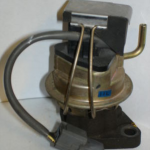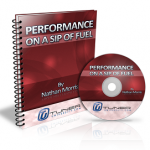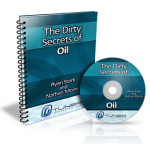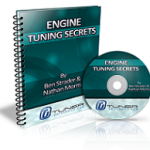The EGR Valve (Exhaust Gas Recirculation) valve is found on almost all modern engines and is considered part of the emissions package of your vehicle. In some states, removing it will cause you to fail your emissions inspection. Unfortunately, there is a huge misunderstanding about it's function circulating around the internet and sadly a lot of folks have actually removed it in the search for "free power."
The EGR valve is not simply about re-burning exhaust gasses to try to clean up the emissions. In fact, it's more about saving fuel and as a side effect, reducing emissions. In essence it "shrinks" your combustion chamber when the need for power is low. It has absolutely 0 effect on WOT performance and I'll explain why in this article as well as tell you how clever this little valve really is.
The EGR valve does not open under heavy load (I am unaware of any exceptions) and therefore, you will not be burning exhaust gasses while at wide open throttle. The idea that it somehow hurts power is simply yet another forum myth based on the thought that it "always" mixes noncombustible exhaust gasses with the air/fuel mixture - but it doesn't.
In reality, the valve opens at small throttle openings and in closed throttle situation to help fill the cylinders that are hungry for air but aren't getting any due to the throttle being in the way.
It is true that the EGR recycles exhaust gas through the engine and those gasses are less than optimum for combustion. However, at low throttle angles your engine isn't struggling to make power so much as it is struggling to work against the vacuum being created by the pistons traveling up and down the bore.
What do I mean? Well, if you've ever played with a syringe, you know that if you pull back on the plunger that it's very easy to do. However, if you block off the end and try to pull on the plunger, it's much harder to pull back. This is an easy way to think about what are called "pumping losses."
Pumping loss is wasted energy caused by the throttle being closed or partially close dmost of the time. When your throttle is closed, the throttle is restricting the engine's air flow but the engine is still pulling as hard as it does at WOT, at that engine speed. That's why you get manifold vacuum (and it can be quite high, like 30psi or so).
Therefore, the engine is actually having to work against itself to pull air in and that's wasting energy ("pumping losses"). This is just a design "flaw"/feature of the modern internal combustion engine and there's not a whole lot that can be done about it. However, the EGR valve allows us to do something very clever.
By providing the exhaust gasses to the engine, it's almost like opening the throttle up a bit more but without producing more power/burning more fuel. You're filling the cylinder, which has to be filled with something, but now you're filling it with a small mix of air/fuel and basically do-nothing gas. This reduces wasted energy and nets a gain in fuel economy.
This by the way is also why 5 speeds generally get better fuel economy than automatics. To get the BEST fuel economy, you want high throttle angles (more throttle) but the highest possible gear (5th, 6th gear). Running the engine at low throttle angles and high engine speeds is extremely wasteful of fuel on the other hand. For example, cruising in 4th gear at 4500rpm instead of 5th at 2800rpm. This is a very complicated issue that I'll unpack in another article at another time, but for now know that this is all just an illustration of the importance of low pumping losses.
In some automatic transmission vehicles there is a "sport" mode on the transmission which in most cases does little other than prevent the transmission from downshifting unless throttle angles get very high. On my IS300, it's called "ECT Power", when it's ON the transmission quickly downshifts and is nice for a "sporty" driving feeling. However, in normal mode, you can give the car more throttle in 5th gear without it shifting down thus saving fuel. It doesn't make the car any faster, it only changes the downshift behavior when you get it more throttle.
Anyhow, The EGR valve also helps your engine by richening up the air/fuel mixture but without additional fuel. It does this by reducing the amount of oxygen in the cylinders and thus the amount of fuel needed to keep a sane engine temperature while at cruising speeds. This reduces the amount of fuel your engine needs to burn when power demands are low. Essentially, to some extent, it's making your engine "smaller" when power demands are low by filling those cylinders with less air and fuel which really is almost as good as shrinking the engine (for times when a "big" one isn't needed).
Bottom line, there are people out there that block of the EGR valve in search of more power - don't be one of them. In a street car, you absolutely want to keep it. There is no performance advantage to removing it and the only thing you'd accomplish is wasting more fuel.
Extremely Limited Time Offer - 3 Days Only
Get a MASTERS DEGREE in Performance Tuning from the BEST in the Field for ONE low package price
For 3 days only, get ALL of our PREMIUM (not available anywhere else) Tuner University Courses featuring some of the greatest minds in motorsports:
- Top 10 Performance Myths Class (MP3 and Edited Transcript) - $29.95 value
- Performance on a Sip of Fuel Class (MP3 and class manual) - $69.95 value
- Header Design Secrets with John Grudynski (MP3 and transcript) - $69.95 value
- Dirty Secrets of Oil with Ryan Stark (MP3 and transcript) - $69.95 value
- Engine Tuning Secrets with Ben Strader of EFI University (MP3 and Transcript) - $69.95 value
Get all of the above courses (many of which not currently available anywhere else) for one single price of just $309.75 $69.95. A HUGE package savings.
You can also buy any of these individually through our resource center, but I don't know why you would as this is basically the whole store for the price of just 1 course. You'll get the MP3 recordings of each class as well as a transcript or companion manual with each course and you'll be able to download them all INSTANTLY.






